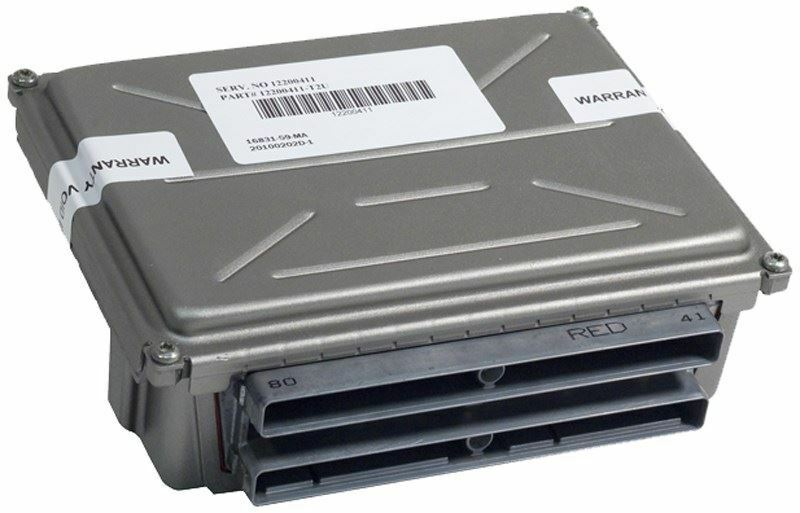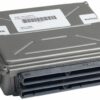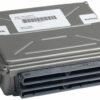Restore Your Vehicle’s Core Performance and Reliability
If you’re dealing with frustrating issues like a persistent Check Engine light, erratic engine behavior, stalling, or poor fuel economy, the problem often traces back to a failing Powertrain Control Module (PCM). As a technician with over two decades of experience, I’ve seen firsthand how a faulty PCM—the electronic brain of your vehicle—can cause a cascade of problems that are difficult to diagnose. This isn’t just a part; it’s the central command unit for your engine and transmission, and when it fails, your vehicle’s performance and reliability suffer.
We offer a dependable and straightforward solution. This PCM, part number 12583827 (also compatible with 12583826), is meticulously prepared for your specific vehicle. We don’t just ship you a box; we flash the module with the latest official GM software updates using the Vehicle Identification Number (VIN) you provide. This critical step ensures seamless communication with your vehicle’s other systems, restoring the original factory performance and often correcting drivability issues that older software couldn’t address.
Case Study: A Tricky Diagnosis
I remember a 2004 Pontiac Grand Am that came into my shop with an intermittent no-start condition that had stumped two other mechanics. It would run fine for days, then refuse to start, showing no specific trouble codes—just a frustrating lack of communication on the scan tool. After checking all the usual suspects (power, ground, network wiring), we focused on the PCM. On a hunch, we connected a substitute module, and the car fired up instantly. The original PCM had an internal intermittent failure that only occurred under specific temperature conditions. Replacing it with a properly programmed unit like this one solved the problem for good and got a relieved customer back on the road.
Common Signs of a Failing PCM
- ✔ Check Engine Light is on with codes like P0601 (Internal Control Module Memory Check Sum Error) or P0606 (ECM/PCM Processor Fault).
- ✔ Engine stalling, misfiring, or running rough for no apparent reason.
- ✔ Unexplained drop in fuel efficiency.
- ✔ Transmission shifting problems, such as harsh shifts or getting stuck in gear.
- ✔ The vehicle fails to start, but the battery and starter are good.
- ✔ Communication errors with your scan tool (U-codes).
Solving Drivability with a 2003-2005 Century PCM
Choosing a pre-programmed 2003-2005 Century PCM from us eliminates the guesswork and the need for expensive dealership programming tools. It’s the most efficient way for both DIY enthusiasts and professional shops to complete the repair correctly. By providing your VIN at checkout, you ensure that the module you receive is configured for your car’s specific options and security system, making the installation process as smooth as possible.
A Straightforward Guide to Installation
- ✔ Safety First: Disconnect the negative terminal from your vehicle’s battery to prevent any electrical shorts.
- ✔ Locate the PCM: On most of these GM vehicles, the PCM is found in the engine compartment, often on the driver’s side, attached to the air filter housing or inner fender. On some models like the Grand Am or Alero, it’s located inside the car under the dash.
- ✔ Disconnect Connectors: Carefully unlatch and remove the electrical wiring harness connectors from the old module. Inspect them for any corrosion or damage.
- ✔ Remove the Old Module: Unbolt the old PCM from its mounting bracket and remove it from the vehicle.
- ✔ Install the New Module: Mount your new, pre-programmed PCM into the bracket and securely tighten the bolts.
- ✔ Reconnect Everything: Plug the wiring harness connectors firmly into the new module until they click into place. Reconnect the negative battery terminal.
- ✔ Perform Security Relearn (If Needed): Turn the key to the ‘ON’ position (without starting the engine) for 10-15 minutes. The security light should turn off. Turn the key off, wait 10 seconds, and then start the vehicle. This allows the anti-theft system to recognize the new PCM.
Verified Vehicle Compatibility
This module is a direct-fit replacement for a wide range of GM vehicles. Please verify your part number (12583827 or 12583826) and check the list below to ensure proper fitment. This is a solution for many popular cars and minivans from this era.
- Alero: 2003-2004 (3.4L)
- Aztek: 2003-2005
- Bonneville: 2004-2005 (3.8L)
- Century: 2003-2005
- Grand Am: 2003-2005 (3.4L)
- Grand Prix: 2003 (3.1L)
- Impala: 2003-2005 (3.4L options)
- LeSabre: 2004-2005
- Malibu: 2003
- Monte Carlo: 2003-2005 (3.4L options)
- Montana: 2003-2005
- Park Avenue: 2004-2005
- Rendezvous: 2003-2005
- Silhouette: 2003-2004
- Venture: 2003-2005
Why is providing my VIN so important?
Your VIN (Vehicle Identification Number) allows us to program the PCM with the exact software and calibrations for your vehicle’s engine, transmission, and options. This ensures it works perfectly right out of the box, avoiding compatibility issues.
Do I need any special tools to install this?
No special programming tools are required because we handle that for you. You will only need basic hand tools like a socket set to unbolt the old module and install the new one.
Where is the PCM located on my 2003-2005 Century?
For the Buick Century, the PCM (also called an ECM) is typically located in the engine compartment on the driver’s side, often attached to the air cleaner box assembly for cooling.
Will this fix my car’s hard shifting problem?
In many cases, yes. The PCM controls transmission shift points and line pressure. If the module is failing, it can cause erratic shifting. A new PCM with updated software often resolves these issues.
How long does the process take after I order?
Once you provide your VIN, programming is typically completed within one business day before we ship the module to you. Our goal is to get you the correct part as quickly as possible.
Is this part compatible with part number 12583826?
Yes, this module is a fully compatible and direct replacement for part number 12583826. It will function identically once programmed to your vehicle’s VIN.


